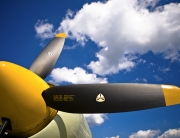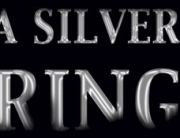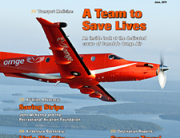I usually don’t delve into aviation news, as many other people already blog and research it to offer enough material to feed all the hungry pilots on the planet. However, this particular bit of news, as well as the discrimination case (see other article *coming soon*) have struck a chord home. I just can’t believe it was already ten years ago…
(See WikiPedia for the source of this information and more about the Concorde Crash)
On July 25th 2000, Air France Concorde Flight 4590 crashed shortly after take-off in France, killing all 109 on board and 4 people on the ground.After reaching take-off speed, the tire of the number 2 wheel was cut by a metal strip lying on the runway, which came from the thrust reverser cowl door of the number 3 engine of a Continental Airlines DC-10 that had taken off from the runway several minutes before. ( This strip was installed in violation of the manufacturer’s rules.) As the tire exploded, a large chunk struck the underside of the aircraft’s wing structure at well over 300 kilometres per hour (190 mph). Although it did not directly puncture any of the fuel tanks, it sent out a pressure shockwave that eventually ruptured the number five fuel tank at the weakest point, just above the landing gear. Leaking fuel rushing over the top of the wing was ignited by an electric arc in the landing gear bay or through contact with severed electrical cables.
Due to the asymmetric thrust, the starboard wing lifted, banking the aircraft to over 100 degrees. The crew reduced the power on engines three and four to attempt to level the aircraft but with falling airspeed they lost control, crashing near the airport.
5 years later, in 2005, French authorities began a criminal investigation of Continental Airlines. A shocking report surfaced, stating that the company had more than 70 incidents involving Concorde tyres between 1979 and 2000, but had failed to take appropriate steps based upon these incidents.
March 2nd, 2008, a deputy prosecutor asked judges to bring manslaughter charges against Continental Airlines and four individuals.
December 6th, 2010, Continental Airlines was found criminally responsible for the disaster by a Parisian court and was fined €200,000 and ordered to pay Air France €1 million. Continental mechanic John Taylor was given a 15-month suspended sentence, while another airline operative and three French officials were cleared of all charges. The court ruled that the crash resulted from a piece of metal from a Continental jet that was left on the runway; the object punctured a tyre on the Concorde and then ruptured a fuel tank.
*********************
Aside from the incredible outcome of this trial, just over 10 years after the historic crash, a very important lesson should be learned from this event.
Many other instances of the same kind have happened around the world, all linking a fatal or near-catastrophic accident with a small event, a single decision made by a single individual to break the rules, ”just this once”.
October 2, 1996, an Aeroperú Flight 603 (Boeing 757) crashed in a CFIT (controlled flight into terrain) accident, killing all passengers on board. The crash was due to loss of flight instruments reliability (speed and altitude in particular). Later investigation into the accident revealed that a piece of masking tape was accidentally left over the static ports after cleaning the aircraft that eventually led to the crash.
On August 24, 2001, Air Transat Flight 236 ran out of fuel over the Atlantic Ocean but the flight crew managed to successfully glide the plane, and safely landed in the Azores with no loss of life. The incident was due caused by an incorrect part installed in the hydraulics system by Air Transat maintenance staff.
Can you say creepy?? I can name many other incidents and accidents where the cause can be linked to an accidental or voluntary omittances, oversights, rule breakings, etc etc.
The question is, when it comes down to it, do we really have the right to allow ourselves such linency? As professionals in a field where a single error can cause the loss of hundred of lives, whether directly or indirectly, it is our duty to be constantly vigilant and ever so caring about our responsibilities.
Due Diligence is the perfect word to demonstrate what we are legally bound to exert. Remember that every time you pass a test ride, every time you pass an exam, every time you are allowed professional priviledges, you are also legally bound to do EVERYTHING in your power to ascertain – with all the tools put at your dispositions – the safety of the flight you are about to undertake.
The outcome of Air Fance Flight 4590 and the criminal ruling pertatining to Continental Airline and more particularly to the engineer who willingly put the wrong part on the DC10 shows with no single shadow of doubt that your actions and decisions can and will have a consequences. Wether its now, or in ten years… Are you ready to face them?
Sources:
http://en.wikipedia.org/wiki/Aeroper%C3%BA_Flight_603
http://en.wikipedia.org/wiki/Air_France_Flight_4590
http://en.wikipedia.org/wiki/Air_Transat_Flight_236





Leave A Comment